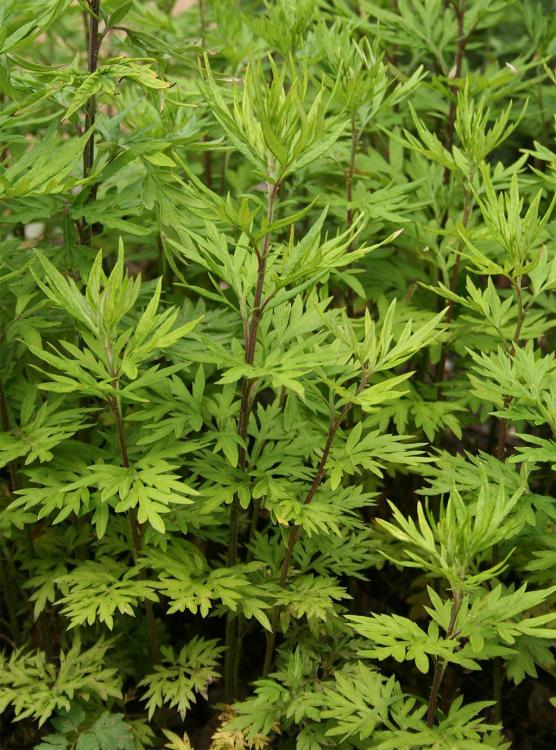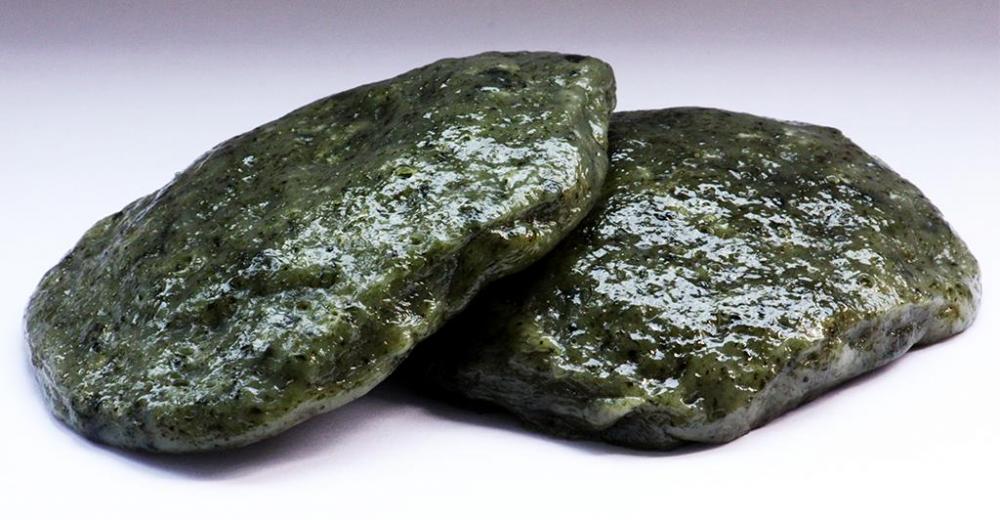21. 艾草 (ài cǎo) – Mugwort – Artemisia verlotiorum
This file is licensed under the Creative Commons Attribution-Share Alike 3.0 Unported license.
艾草 (ài cǎo) is Chinese mugwort (ugly word!), a relation to the sunflower, but not so pretty. It grows all over Asia. The bitter leaves are, to my knowledge, only used in one culinary way.
These cakes, known as 艾叶粑 (ài yè bā) and which are popular here, are made from a mixture of Chinese mugwort, which supplies the colour and flavour, and two type of rice flour which supplies the bulk. The manufacturing process is complicated but involves washing then boiling the mugwort leaves. The boiled leaves are processed with lye to remove mugwort’s natural bitterness and to soften them. The leaves are then sweetened with sugar and mixed with a 50-50 mixture of rice flour and sticky rice flour to make a dough which is formed into little cakes two to three inches in diameter, then steamed for around 30 minutes.
They taste sweet and herbal. I was sceptical, but ended up liking them. Usually sold by street vendors, when in season around June. The fresh herb is available in markets at the same time, otherwise how could the vendors make them!.




